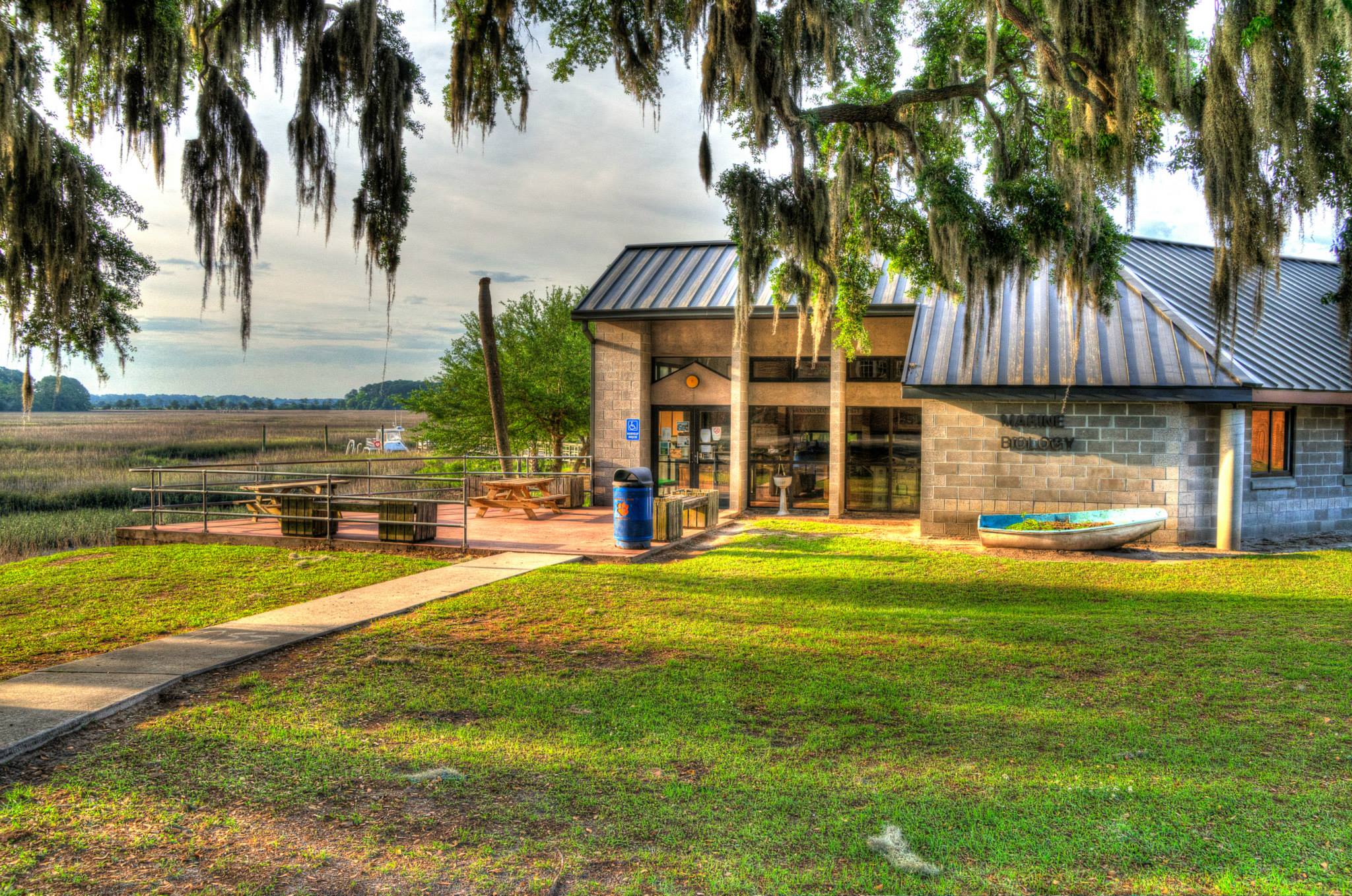Research Labs & Facilities
Well developed research laboratories are located in Drew-Griffith, Hubert, Herty and Marine Biology Buildings, along with a new 30,000 sq. ft. $20.5M Science and Technology Center, which houses engineering and chemistry labs, and a new Marine Science Center on Livingstone Avenue with deep water access. These laboratories are fully equipped with the instruments required to conduct advanced research in biomedical, chemistry, forensic science, marine sciences, and engineering areas by participating faculty and students.
- Biomedical Research Laboratories (Drew Griffith): Since 1999, laboratories to support biomedical research have been developed through external funding (NIH SCORE, NIH NIGMS, NIH RIMI, US Air Force, NOAA, US Department of Education Title III program): 1) biochemical toxicology laboratory, 2) molecular genetics laboratory, 3) biochemistry laboratory, 4) cell-culture facility, 5) radioisotope laboratory, 6) a small animal facility, and 7) a Core-Facility. These labs are active and fully equipped with several major instruments required for faculty and students to conduct biomedical research.
- Molecular Biology and Biotechnology Research Laboratory (BTRL) (Drew Griffith): The BTRL is equipped with state-of-the-art instrumentation such as the ballistic bombardment device (gene gun), thermal cycler, growth chambers, CO2 Incubator, transfer hoods and several other pieces of equipment needed for conducting experiments in biotechnology and molecular biology.
- Hemolytic Anemia Research Laboratory (Drew Griffith): This laboratory is fully equipped with a Beckman centrifuge, UV Spectrophotometer, Waters HPLC, Laminar Flow Hood, and gel electrophoresis units required to conduct hematology research. Undergraduate students conduct research in this laboratory as part of their research courses.
- Environmental Science Lab (Drew Griffith): This facility is well equipped to conduct analytical environmental science research. The equipment includes: a Inductively Coupled Plasma Optical Emission Spectrometer, an Atomic Absorption Spectrophotometer, a Gas Chromatograph, a Liquid Scintillation Counter, and a Gamma Counter. This laboratory has the capability of analyzing organochlorine compounds, PCBs, PAHs, dioxins, heavy metals and radionuclides in biological tissues, plant, soil and sediments.
- Marine Sciences Facilities include the Marine Biology Building (wet and dry labs, classroom, computer lab, 60 foot floating dock), the new Marine Science Center on Livingston Avenue which has a 2nd dock with deep water access, and labs (experimental chamber, wet lab with sea pump system, analytical computing lab, benthic lab, dolphin survey lab, coastal biophysics lab, instrumentation research lab), and 3 vessels (MARGARET C ROBINSON 36 ft work boat, Tiger II 22 ft work boat, and 25 ft tour boat.
- The Living Marine Resources Cooperative Science Center (LMRCSC): The LMRCSC is an established collaborative research center, with partners including NOAA and the University of Maryland, which prepares students for careers in marine science. The center has been instrumental in providing training for science majors and marine science graduate students to conduct research. Each year the center enables many students to present papers at national and international conferences.
- Chemistry Research Laboratories: There are four state-of-the art research laboratories, an instrument room and a cold room in the renovated Drew-Griffith Building. There is also a computer laboratory for the chemistry program. The instruments available for teaching and research are of the quality and caliber to support graduate level research, including a JEOL ECX 300 MHz Nuclear Magnetic Resonance (NMR) Spectrometer, Varian BioMelt Uv-Visible Spectrophotometer and Fluorescence BioMelt, Thermo Electron Polaris Polaris Q, CEM Microwave System, Applied Separations Super Critical Fluid Extraction System and Shimadzu Prestige FT-IR.
- Geographic Information Systems (GIS) Laboratory: The GIS Laboratory In Herty Hall supports ArcInfo, Statistical Analysis Software (SAS, Inc.), and the Statistical Program for the Social Sciences (SPSS). It is one of the most powerful computing laboratories on the SSU campus. It has 20 stations equipped with Arc Info 9.2, SPSS, SAS, and Microsoft Office Professional. It also holds audio-visual and video-conferencing equipment, a wireless network and microphone system, as well as a plotter. This facility is connected to the NOAA Living Marine Resources Cooperative Science Center's virtual campus. The laboratory was noted by analysts at the Savannah Metropolitan Planning Commission as having the largest GIS training capacity in this region.
- Engineering Technology Resources
